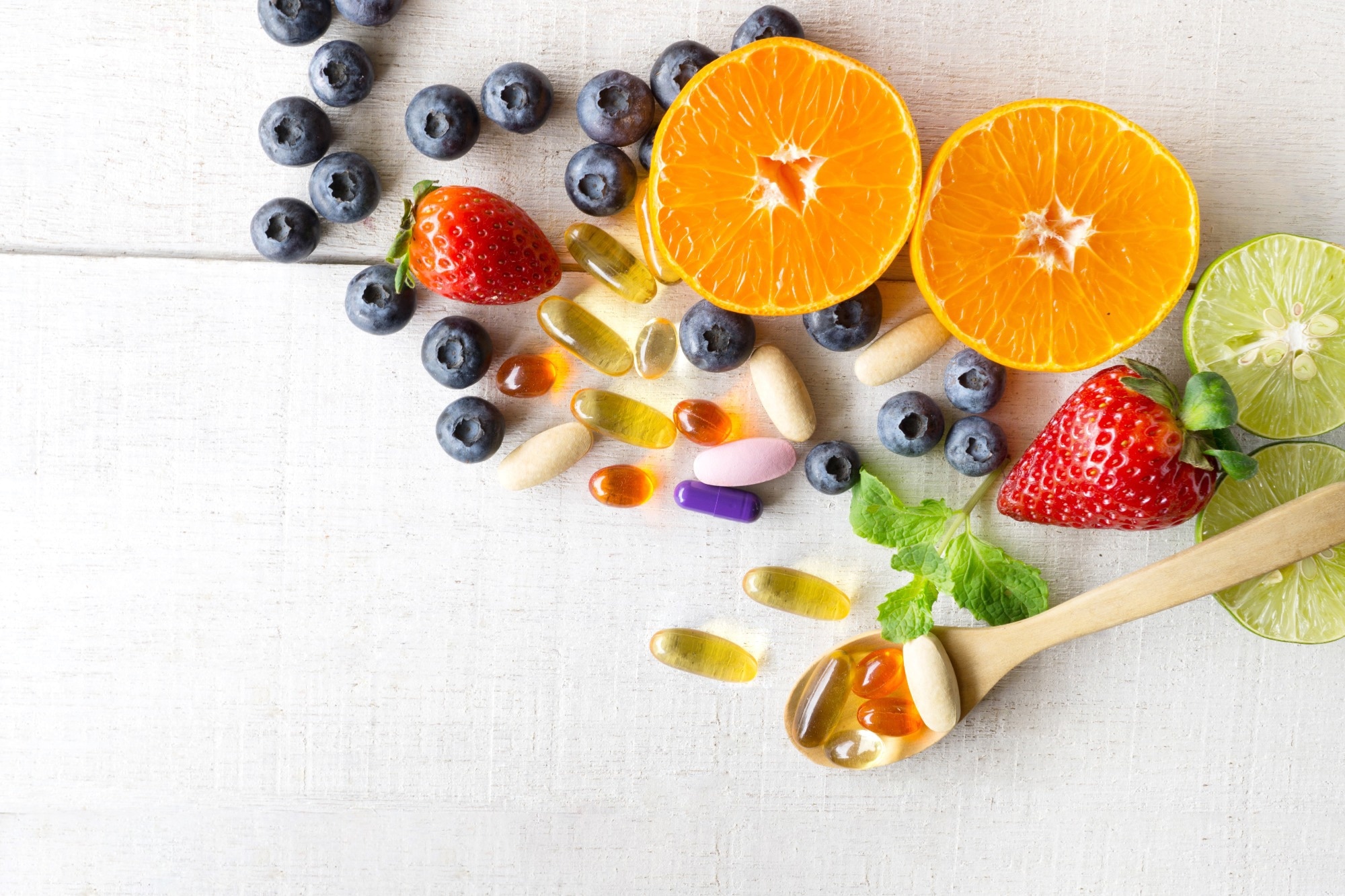In a recent study published in PLoS Pathogens, researchers explore the role of the human gut microbiome as a source of essential vitamins.
 Study: Can we microbe-manage our vitamin acquisition for better health? Image Credit: Lallapie / Shutterstock.com
Study: Can we microbe-manage our vitamin acquisition for better health? Image Credit: Lallapie / Shutterstock.com
Vitamin production by gut microbiota
Vitamins are essential micronutrients required for various metabolic and regulatory processes in all living organisms. Importantly, many vitamins cannot be synthesized by humans; therefore, they must be obtained from external sources.
Within the gastrointestinal (GI) tract, many microorganisms can produce vitamins de novo, some of which include vitamin K and various B vitamins like niacin, riboflavin, and cobalamin. In fact, recent genome annotation studies have indicated that up to 65% of human gut commensal microorganisms produce at least one type of vitamin B, with some organisms producing all eight and others not involved in de novo vitamin synthesis. The gut microbiota is also capable of converting dietary vitamin A into its metabolites, which subsequently contributes to immune homeostasis and protection against pathogenic invasion.
Recent estimates indicate that up to 30% of the recommended daily intake for these vitamins is produced by the gut microbiota. However, this largely depends on the individual’s dietary habits and microbiome composition.
Vitamins can also exert beneficial effects on the gut microbiota by increasing the number of commensal microorganisms, enhancing microbial diversity, changing the levels of short-chain fatty acids (SCFAs), and adjusting barrier function and immune response capabilities. Additionally, vitamins exhibit antioxidant properties that can protect the host against infectious diseases by directly influencing the immune system or indirectly through their impact on the redox state.
The role of pathogens in the GI tract
The presence of opportunistic pathogens like Candida albicans in the human GI tract can lead to severe and potentially deadly invasive diseases. Notably, most individuals carry these pathogens in their GI tract without experiencing any infection, thus indicating a potentially commensal role of these organisms.
There are various advantages that can be attributed to the harboring of potential pathogenic species in the GI tract. For example, C. albicans has been shown to produce high concentrations of riboflavin; however, the reason for this overproduction remains unclear. Comparatively, other pathogens appear to stimulate the reactivity of neutrophils, thereby training the immune system to respond to invasive infections.
Probiotics and diet
As research has advanced our understanding of the microbiome’s important role in human health, probiotic foods, and supplements have become increasingly popular. Probiotics typically include Lactobacillus, Bifidobacterium, or Saccharomyces species, all of which can produce vitamins de novo.
Certain dietary habits can also impact vitamin production. High carbohydrate and low-fat diets, for example, have been linked to increased urinary riboflavin excretion, thus indicating a potential increase in riboflavin secretion by microbiota under these conditions.
Vitamin fortification and its impact on human health
Fortifying food products with vitamins is one approach that has been used to improve the nutritional quality of foods, particularly in high-income countries where diets are often dominated by calorie-dense and low-nutrient food products.
In addition to fortified foods, vitamin supplementation is another way in which individuals can ensure that they are meeting their daily vitamin requirements; however, the scientific evidence supporting the benefits of vitamin supplementation is unclear. For example, the excessive intake of fat-soluble vitamins like vitamins A, D, E, and K can accumulate in adipose tissue, thereby leading to adverse health effects.
Additionally, there is some research indicating that the high doses that are often used in oral vitamin supplements can disrupt microbiome-host interactions by altering competitive or syntrophic interactions between gut microbes. For example, previous in vivo studies in mice have shown that supplementation with vitamin B12 promotes colonization and pathogenesis of a mouse-specific pathogen known as Citrobacter rodentium by interfering with Lachnospiraceae activities.
Conclusions
The study findings emphasize the importance of the commensal relationship between the gut microbiota and the human host through its role as a source of critical vitamins. Further research is needed to elucidate the molecular mechanisms of communication between the microbiome and human host to discern the impact of these microorganisms on human health and potentially identify new therapeutic targets.